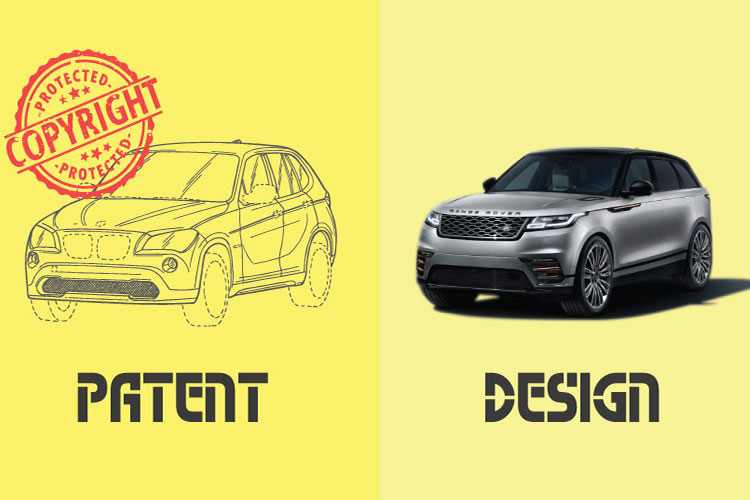

When it comes to protecting intellectual property (IP) in India, two of the most widely used legal tools are design registration and patent protection. While both offer exclusive rights to creators and inventors, they are fundamentally different in terms of what they protect, the legal criteria involved, and the duration of protection. Choosing the right form of IP protection can make a significant impact on the commercial and legal success of a product or invention.
This comprehensive guide will walk you through the key differences between design registration and patent protection, highlighting their features, benefits, and legal framework in India.
What Is Design Registration?
Design registration is a type of legal protection that safeguards the visual appearance of a product. This includes the shape, configuration, pattern, ornamentation, or surface design applied to a product by any industrial process. The aim of registering a design is to ensure that no one else can reproduce or copy that design without the creator’s permission.
Under the Designs Act, 2000 in India, a registered design gives its owner the exclusive right to apply that design to products in the same class. This means others cannot legally produce, sell, or use a product with a similar design without the permission of the rightful owner.
Benefits of Design Registration
One of the most significant benefits of design registration in India is that it grants legal ownership of the aesthetic aspect of a product. This can offer a strong market advantage, especially in industries like fashion, furniture, packaging, or consumer goods, where visual appeal plays a critical role.
Another advantage is that a registered design can be licensed or assigned, allowing the owner to generate additional revenue. In case of infringement, the registered owner has the right to sue for damages or seek an injunction to stop the infringer from further use of the design.
At its core, design registration protects the creative expression of a product’s look and feel, which can play a crucial role in brand recognition and customer loyalty.
What Is Patent Protection?
In contrast to design registration, patent protection is granted for new inventions or technological advancements. A patent gives the inventor the exclusive legal right to use, manufacture, sell, or distribute the invention for a specific period, usually 20 years from the filing date.
To be eligible for patent protection in India, the invention must fulfill three key requirements: it must be novel, non-obvious, and industrially applicable. Patent law in India is governed by the Indian Patent Act, 1970 and is enforced by the Office of the Controller General of Patents, Designs and Trademarks.
Types of Patents
There are two major types of patents recognized in India:
Utility patents protect new and useful processes, machines, compositions of matter, or improvements thereof. These are the most common types of patents and are typically used for technological inventions.
Design patents, though less common in Indian law (compared to the U.S.), are often confused with design registrations. In India, visual design is protected under the Designs Act, and not as design patents. Hence, design registration in India serves a similar purpose to design patents in countries like the United States.
Key Differences Between Design Registration and Patent Protection
Although both design registration and patents are forms of intellectual property protection, their purposes and scopes are quite different. Design registration protects the appearance of a product, while patents protect functionality or innovation.
The criteria for protection also vary. Design registration requires the design to be new and original, but it does not need to serve any technical function. On the other hand, patents require a detailed technical specification proving the invention's novelty, non-obviousness, and usefulness in an industry.
The duration of protection is another major difference. A registered design in India is valid for 10 years, extendable by 5 more years, while a patent remains valid for 20 years, subject to annual renewal and compliance with legal obligations.
Legal Requirements and Process
Registering a design in India is generally faster and less complicated compared to obtaining a patent. The application process is relatively simple and doesn't require a prior art search or in-depth examination. Once the design is found to be new and original, it is published in the Design Journal and granted registration.
Patent registration in India, however, involves a more rigorous process. After filing a provisional or complete specification, the patent application is examined by a patent officer, who may raise objections or request clarifications. Once the application clears the examination and opposition stage (if any), the patent is granted, and the details are published in the Patent Journal.
The cost and timeline for design registration are usually lower than those for patents, making it a more accessible option for startups and small businesses focusing on product aesthetics.
Commercial Value and Market Impact
Design registration can add significant brand value by ensuring the uniqueness of your product in the market. It plays a key role in industries where product design influences consumer choice, such as electronics, fashion, and consumer packaging.
Patent protection, on the other hand, offers stronger monetization opportunities, especially in technology and biotechnology sectors. A patented invention can be licensed to other manufacturers, sold for profit, or used to attract investment or government grants.
Both forms of protection can increase a company’s valuation and competitive advantage, depending on the nature of the product or invention.
Which One Should You Choose?
The decision between design registration and patent protection depends entirely on the nature of your creation. If your innovation lies in how a product looks, then design registration is appropriate. But if your innovation involves a new technical solution, a mechanism, or functionality, then patent protection is necessary.
Some products may even qualify for both protections. For example, a new smartphone may have a unique design eligible for design registration and new technology inside that qualifies for a patent.
Consulting with intellectual property experts like those at Madaliya.com can help you understand which protection strategy fits best for your specific case.
Conclusion
Understanding the difference between design registration and patent protection is essential for any business or creator aiming to secure their intellectual property rights in India. While design registration focuses on safeguarding the aesthetic appeal of a product, patents protect functional innovations that offer technological advancement.
Both play vital roles in IP strategy, and when used correctly, they provide strong legal protection, commercial advantages, and long-term value. By choosing the right path—design, patent, or both—you can ensure that your creation is fully protected under Indian law.
Before proceeding, it's wise to seek professional advice from a qualified IP attorney or an intellectual property firm like Madaliya.com, which specializes in design registration, patent filing, and IP enforcement services in India.






